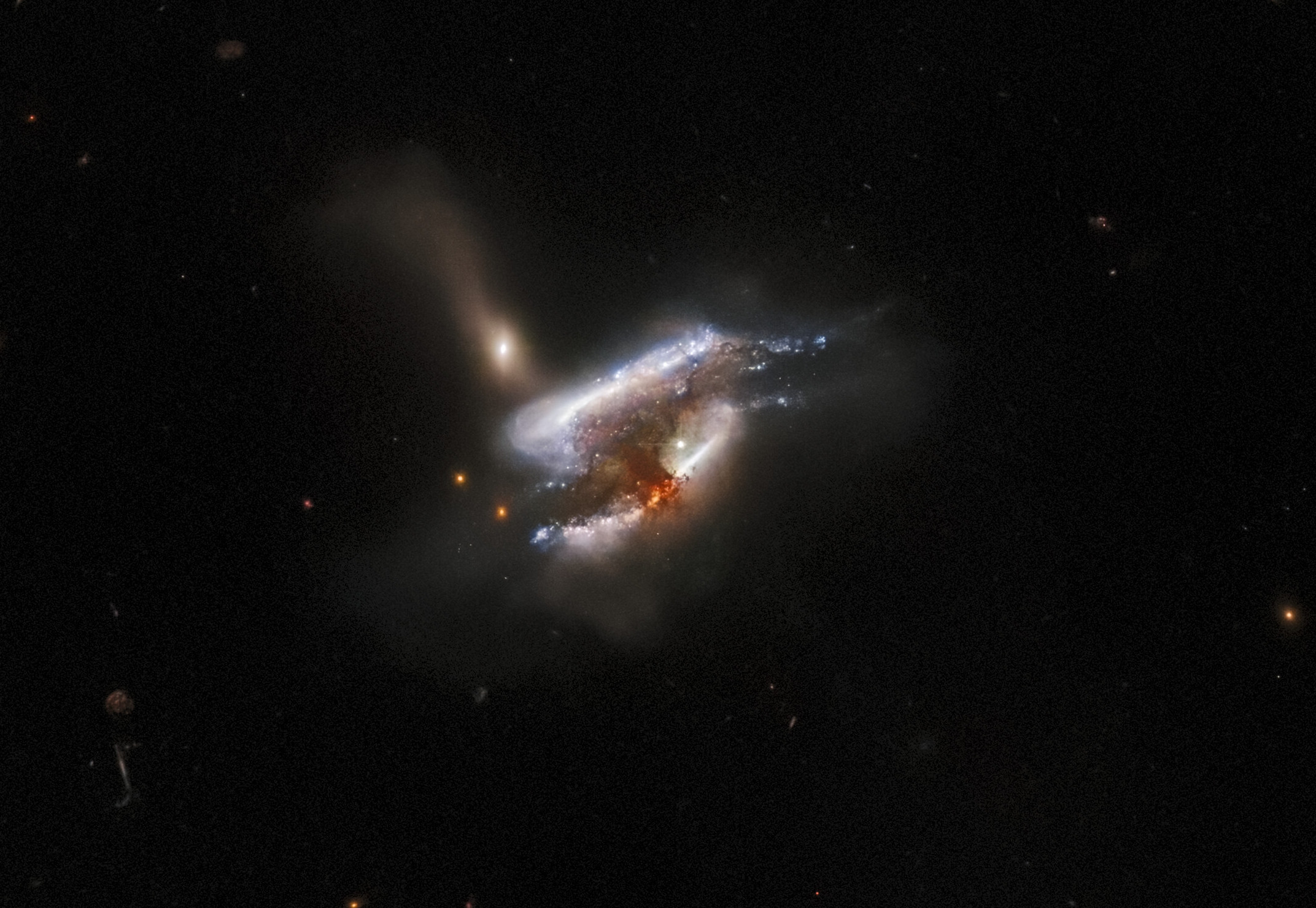Three galaxies are tearing each other apart in stunning new Hubble telescope image
This twisty-turny collision is a preview of what awaits our galaxy.

Corkscrewing through the cosmos, three distant galaxies collide in a stunning new image captured by NASA's Hubble Space Telescope.
This cosmic crash is known as a triple galaxy merger, when three galaxies slowly draw each other nearer and tear each other apart with their competing gravitational forces. Mergers like these are common throughout the universe, and all large galaxies — including our own, the Milky Way — owe their size to violent mergers like this one.
As chaotic as they seem, mergers like these are more about creation than destruction. As gas from the three neighboring galaxies collides and condenses, a vast sea of material from which new stars will emerge is assembled at the center of the newly unified galaxy.
Existing stars, meanwhile, will survive the crash mostly unscathed; while the gravitational tug-of-war among the three galaxies will warp the orbital paths of many existing stars, so much space exists between those stars that relatively few of them are likely to collide, Live Science previously reported.
The galaxy cluster seen above is called IC 2431, located about 681 million light-years from Earth in the constellation Cancer, according to NASA. Astronomers detected the merger thanks to a citizen science project called Galaxy Zoo, which invited more than 100,000 volunteers to classify images of 900,000 galaxies captured by the Hubble telescope that were never thoroughly examined. The crowdsourced project accomplished in 175 days what would have taken astronomers years to achieve, according to NASA, and the initiative has already resulted in a number of strange and exciting discoveries, like this one.
Studying galactic mergers can help astronomers better understand the Milky Way's past and future. The Milky Way is thought to have gobbled up more than a dozen galaxies over the past 12 billion years, including during the exceptionally named Gaia sausage merger, Live Science previously reported.
Meanwhile, our galaxy appears on track to combine with the nearby Andromeda galaxy about 4.5 billion years from now. The merger will totally alter the night sky over Earth but will likely leave the solar system unharmed, according to NASA.
Sign up for the Live Science daily newsletter now
Get the world’s most fascinating discoveries delivered straight to your inbox.
Originally published on Live Science.

Brandon is the space/physics editor at Live Science. His writing has appeared in The Washington Post, Reader's Digest, CBS.com, the Richard Dawkins Foundation website and other outlets. He holds a bachelor's degree in creative writing from the University of Arizona, with minors in journalism and media arts. He enjoys writing most about space, geoscience and the mysteries of the universe.










